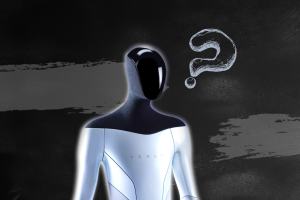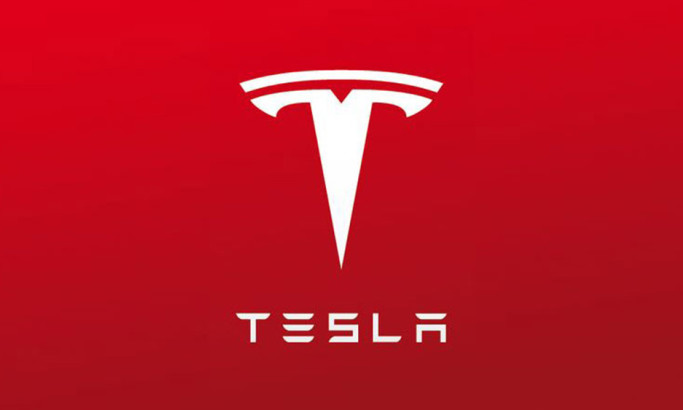Meet Tesla’s Humanoid Robot: The Most Advanced of its Kind
Have you ever wondered what it would be like to have a robot that can do anything you don’t want to do? A robot that can perform tasks that are dangerous, repetitive, or boring, such as grocery shopping, manufacturing assistance, or household chores? A robot that can learn from its environment and adapt to different situations? A robot that looks and acts like a human?
If you have, then you are not alone. Elon Musk, the visionary founder and CEO of Tesla, has also dreamed of such a robot. And he has decided to make it a reality.
On August 19, 2023, Tesla held its AI Day event, where it showcased its latest innovations and achievements in the field of artificial intelligence. Among the highlights of the event was the announcement of Optimus, Tesla’s humanoid robot that aims to revolutionize the field of robotics and automation.
In this article, we will explore the features and capabilities of Optimus and how it compares to other humanoid robots in the market. We will also discuss the benefits and drawbacks of Optimus for humans and society, and the future prospects and challenges of Optimus and humanoid robotics. This article is written by a robotics enthusiast and a Tesla fan, who has been following the development of Optimus closely and is eager to share his insights and opinions with you.
What is Optimus and what can it do?
Optimus is a humanoid robot designed by Tesla that resembles and acts like a human. It has a height of 5 feet 8 inches, a weight of 125 pounds, and a carrying capacity of 45 pounds. It has a screen on its head that can display useful information, such as its status, emotions, or instructions. It has sensors on its body that can detect its surroundings and its own state. It has 40 electromechanical actuators that enable it to move its limbs and joints smoothly and precisely.
Optimus is intended to perform tasks that humans don’t want to do, or are better suited for robots. These tasks include dangerous, repetitive, and boring tasks, such as grocery shopping, manufacturing assistance, and household chores. Optimus can also perform tasks that require high levels of skill, dexterity, or creativity, such as painting, playing musical instruments, or solving puzzles.
Optimus is not a standalone product, but a platform that can be customized and programmed for different purposes and applications. Tesla plans to release the software and hardware specifications of Optimus to the public, allowing developers and enthusiasts to create their own versions and variations of Optimus. Tesla also hopes that Optimus will become a universal robot that can work with any Tesla product, such as its cars, solar panels, or batteries.
How does Optimus work and what makes it unique?
Optimus is controlled by the same AI system that Tesla uses for its self-driving cars. This AI system is based on a neural network architecture that can process large amounts of data and learn from its environment and experiences. The AI system can also communicate with other Tesla products and services, such as the Tesla Network, the Tesla Supercharger, or the Tesla App.
Optimus has several features that make it unique and superior to other humanoid robots. Some of these features are:
- Tesla-designed actuators: Optimus uses Tesla-designed actuators that have integrated electronics and harnessing, making them more compact, efficient, and reliable than conventional actuators. The actuators also have a high power-to-weight ratio, allowing Optimus to move faster and stronger than other robots of its size and weight.
- Foot force/torque sensing: Optimus has sensors on its feet that can measure the force and torque applied by the ground. This allows Optimus to adjust its balance and posture according to the terrain and the task. Optimus can also use its feet to interact with objects and manipulate them, such as opening doors, pushing buttons, or kicking balls.
- Tactile sensing on all fingers: Optimus has sensors on all of its fingers that can detect the shape, texture, temperature, and pressure of the objects it touches. This allows Optimus to grasp and manipulate objects with high precision and sensitivity, such as picking up a pen, typing on a keyboard, or holding a glass.
- Delicate object manipulation: Optimus can handle delicate objects without damaging them, such as eggs, flowers, or jewelry. Optimus can also perform fine motor skills, such as threading a needle, tying a knot, or writing a signature.
Optimus can perform complex tasks that require coordination, planning, and problem-solving, such as sorting colored blocks, maintaining a yoga pose, or handling eggs without cracking them. Optimus can also learn new skills and improve its performance over time, such as playing chess, dancing, or cooking.

How does Optimus compare to other humanoid robots?
Humanoid robots are robots that have a human-like appearance and behavior. They are designed to mimic human anatomy, motion, and intelligence, and to interact with humans and their environment. Humanoid robots have been developed for various purposes and applications, such as research, entertainment, education, health care, and social assistance.
The market for humanoid robots is expected to grow rapidly in the coming years, as the demand for automation, personalization, and human-robot interaction increases. According to a report by Grand View Research, the global humanoid robot market size was valued at $1.2 billion in 2020 and is projected to reach $15.7 billion by 2028, registering a compound annual growth rate of 36.4%.
However, the development of humanoid robots is not without challenges and limitations. Some of the challenges and limitations include:
- Technical complexity: Humanoid robots require a high level of technical complexity and sophistication, as they have to replicate the structure, function, and coordination of the human body and brain. This involves integrating multiple components and systems, such as sensors, actuators, processors, batteries, and software, and ensuring their compatibility, reliability, and safety.
- Cost: Humanoid robots are expensive to produce, maintain, and operate, as they require high-quality materials, components, and labor. The cost of humanoid robots can range from tens of thousands to millions of dollars, depending on their size, features, and capabilities. The cost of humanoid robots can also limit their accessibility and affordability for potential users and customers.
- Social acceptance: Humanoid robots can face social acceptance issues, as they can elicit mixed reactions and emotions from humans, such as curiosity, fascination, admiration, fear, distrust, or disgust. The social acceptance of humanoid robots can depend on various factors, such as their appearance, behavior, purpose, and context. The social acceptance of humanoid robots can also vary across cultures, regions, and demographics.
Optimus is one of the latest and most advanced humanoid robots in the market. It competes with other humanoid robots that have been in use or development for years, such as Nadine, Jia Jia, Geminoid DK, Sophia, and BINA48. These humanoid robots have different levels of realism, functionality, cost, and social impact, depending on their design, technology, and application. Here is a comparison of Optimus with some of these humanoid robots:
Table
| Robot | Realism | Functionality | Cost | Social Impact |
|---|---|---|---|---|
| Optimus | Moderate | High | Low | High |
| Nadine | High | Moderate | High | Moderate |
| Jia Jia | High | Low | High | Low |
| Geminoid DK | High | Low | High | Low |
| Sophia | High | Moderate | High | High |
| BINA48 | Low | Low | High | Low |
- Optimus has a moderate level of realism, as it has a human-like shape and size, but not a human-like face or skin. Optimus has a high level of functionality, as it can perform a wide range of tasks that humans don’t want to do, or are better suited for robots. Optimus has a low level of cost, as it uses Tesla’s existing AI system and components, and is intended to be a mass-produced and customizable product. Optimus has a high level of social impact, as it can potentially improve the productivity, safety, convenience, and quality of life of humans and society.
- Nadine is a humanoid robot developed by Nanyang Technological University in Singapore. Nadine has a high level of realism, as it has a human-like face, skin, hair, and voice, and can express emotions and gestures. Nadine has a moderate level of functionality, as it can perform tasks such as receptionist, personal assistant, or companion. Nadine has a high level of cost, as it uses advanced materials, components, and software, and is intended to be a niche and exclusive product. Nadine has a moderate level of social impact, as it can potentially provide social and emotional support and interaction for humans, especially the elderly and the lonely.
- Jia Jia is a humanoid robot developed by the University of Science and Technology of China. Jia Jia has a high level of realism, as it has a human-like face, skin, hair, and voice, and can express emotions and gestures. Jia Jia has a low level of functionality, as it can perform tasks such as greeting, chatting, or posing. Jia Jia has a high level of cost, as it uses advanced materials, components, and software, and is intended to be a niche and exclusive product. Jia Jia has a low level of social impact, as it can potentially provide entertainment and amusement for humans, but not much practical value.




